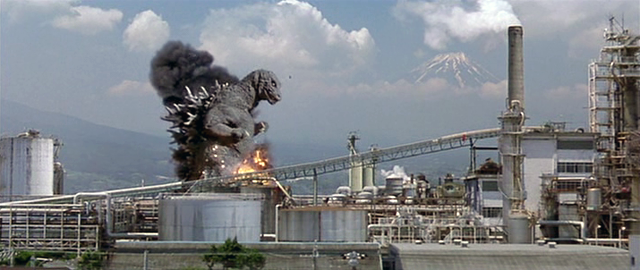
I hope this journey down the Green Brick Road of Safety has been as much a pleasure for you as it has been for me and I thank you for allowing me to show you the sights. We are all most at the end of this trip as there is only one last leg to go. Along this road, we have met and come to know what is Hazard Analysis, how to pick appropriate PPE, the need for good HouseKeeping, and the importance of Training.
You would think with all this coverage available and your extra effort to protect and keep your employees safe how could you possibly do more? Make sure that in the event of a sudden catastrophe your employees know what to do and can move out of harm’s way in the most expeditious manner possible by having an emergency preparedness/evacuation plan to ensure this.
Whether you call them disasters, calamities, catastrophes, or emergencies they come in many different forms as floods, tornadoes, earthquakes, atmospheric rivers, and severe heatwaves. These nasty little events usually come out of nowhere at any time. They can come while you’re sleeping, while you’re shopping, or while you are at work.
MEDICAL EMERGENCIES – What is your company’s policy for handling emergencies? Do you advise all to call 911 immediately? Some companies have trained employee response teams who you must contact at the number specified by the company. They are trained in first aid and CPR/AED and can determine how serious a situation is and how to handle it. This is another opportunity to get employees involved with safety by offering CPR and first aid courses and allowing them to rotate on response teams. This can be done through your local Fire department or Chapter of the Red Cross.
FIRES – Large facilities may have their own fire response team trained by local firefighters. They will be called out immediately. For smaller companies train staff how to use a fire extinguisher using the PASS method, (Pull pin, Aim, Squeeze trigger, Sweep side to side). One thing you can’t teach is using common sense when dealing with a fire but please stress that if the fire is too large, let the professionals handle it. Get out, shut the door behind you, and call 911. We will cover evacuations from a fire below.
Man Made Disasters – (Human error) – Chemical spills, gas and other toxic fumes released, excessive dust, explosions, refinery fires, oil spills, and potential exposure to other lethal items. In some cases, these can be even more devastating over time than a natural disaster since the area contaminated could be unusable for years, destroying natural habitats for wildlife. Contaminants also make their way into groundwater which is near impossible to clean up. The BP spill, as well as the Bhopal gas tragedy in 1984, are examples. We will cover evacuations below.
Evacuation plans and Shelter and place locations – Your training should focus on how you will alert employees to an emergency. Bells, whistles, or general announcements. One company used a series of whistle blasts to indicate the emergency. When an evacuation is required, usually from a fire, the evacuation route needs to be clearly posted throughout your facility indicating the best route to follow for escape from your present location and where the meeting place is located. This is important as it is the best way to be able to report to firefighters that the building is cleared of employees. Now they can deal with the fire only. Review it at least annually and make sure the route doesn’t encounter any obstacles delaying evacuation from new walls, new rooms, new equipment, or racking/storage.
All the offices, buildings, or areas designated to be used for Shelter and place should also be clearly marked with signs. You should shelter and place after an earthquake, as long as the building is structurally sound. You don’t know the conditions surrounding your facility. There could be downed powerlines, ruptured waterlines, and downed overpasses. Check for the smell or sound of leaking gas. Prepare for aftershocks and find the emergency survival kit. You should have flashlights, water, and other emergency supplies in it. if the shelter and place are of air born contaminants find the designated location and close all windows, air ducts, vents, doors, and any other openings to the outside. Also, use duct tape and plastic to seal them all to further prevent any fumes or gases from entering which should also be in your emergency survival kit. This is a great project the safety committee can work on with employees, developing and stocking small kits for shelter and place rooms with plastic sheathing and duck tape as well as emergency supplies and water.
Don’t be like Dorothy and wait until a disaster hits to find out what to do, it’s TOO LATE to prepare. It’s just as good a time now to review your general safety disaster plan and the company’s procedures for handling emergencies. Your company should at least have an annual fire/evacuation drill or an emergency preparedness drill. I worked for a short-lived dot com company back in the day, and even though they held an annual evacuation drill, someone thought it was a great idea to have it on April Fool’s Day whenever it fell on a work day. Most of the employees just rolled their eyes with annoyance and kept working thinking it was a joke. This is NOT the reaction you’re looking for. It’s serious business.
Well, that completes this portion of our journey on the GREEN BRICK ROAD OF SAFETY. Glad you joined us and enjoyed the trip.


